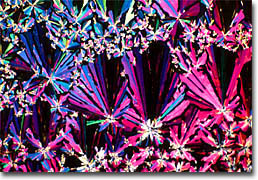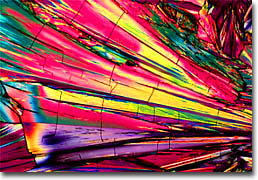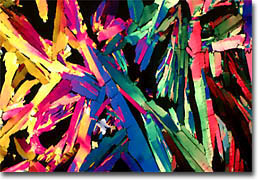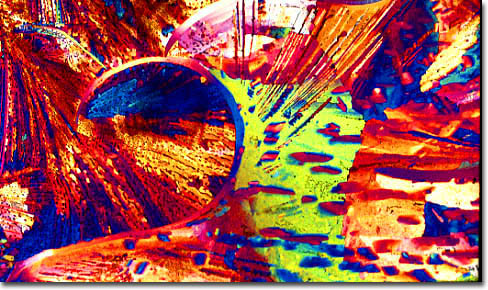|
Cranberries have a special place in the hearts of many Americans. The semi-sweet berries with a distinctive tartness are widely believed to have been enjoyed at the first Thanksgiving dinner in Plymouth, and they continue to be part of the holiday tradition. Native Americans had been consuming and utilizing the fruit, however, long before the arrival of the Pilgrims. Many tribes, for instance, crushed cranberries to make dyes and pounded them into dried venison and deer fat to make a food termed "pemmican." Most of these groups also had their own unique names for cranberries, which they knew could be found growing in the wild on vines in sandy bogs and marshes. To some they were "sassamanesh," while others knew the berries as "ibimi" or "atoqua." The modern term for the fruit did not enter the human lexicon until German and Dutch colonists noticed that the cranberry blossom bears a resemblance to the head of a crane, resulting in the term "crane berry," which eventually evolved into the current version of the word. Considering the history of the cranberry, it seems fitting that the corporate headquarters of Ocean Spray, North America's leading producer of products derived from the fruit, is located in Lakeville-Middleboro, Massachusetts, and its visitor's center is located about one mile north of Plymouth Rock.

Ocean Spray Cranberry Juice Cocktail
In this part of the world, where the cranberry is elevated to the status of a fruit celebrity, the success story of Ocean Spray is a legend. Indeed, each year more than a quarter of a million people visit "Cranberry World" where displays and tour guides provide facts, folklore, and free samples. The chronicle of the company begins in 1930, when three New England cranberry growers founded Ocean Spray as a farmers' cooperative. Marcus L. Urann, an attorney and cranberry farmer who developed a kind of cranberry sauce that was stable enough to sit on the shelves of grocery stores, was the vanguard of the group, which was united by the common desire to create new products made from cranberries in order to increase demand for their crops. When the cooperative released Cranberry Juice Cocktail in the same year the company was established, it became the world's first producer of juice drinks derived from cranberries. Early on, Ocean Spray also provided cranberry jelly for Thanksgiving and Christmas dinners, but the popularity of the company's juices seemed to overshadow these other products, which were eventually discontinued.

Ocean Spray Mauna Lai
Today, Ocean Spray sells about 80 percent of the world's cranberries, yet has remained independently owned with stock being held by about 800 cranberry growers and 100 grapefruit growers, who first had the opportunity to join the cooperative in 1976. Such figures make it difficult to believe that in the late 1950s the company almost collapsed when the government associated cancer with a pesticide used on a small part of the cranberry crop. Yet, Ocean Spray was able to overcome this obstacle and eventually become an even stronger company. In fact, by 1963 the company had made history again with its introduction of the industry's first juice blend drink, Cran-Apple. The popularity of this innovative offering resulted in the company deciding to continue to broaden its lineup, which today includes a wide variety of juices, blends, dried snack bits, sauces, and fresh fruit. Ocean Spray has also been a trendsetter in the area of packaging. In 1981, for instance, the company pioneered the "brick pack," a square package with its own straw, which transformed the children's juice business. Four years later, Ocean Spray broke new ground again by becoming the first manufacturer to package juice drinks in polyethylene terephthalate (PET) plastic bottles.

Ocean Spray Cran-Strawberry
By the beginning of the twenty-first century, Ocean Spray had been established for 70 years, yet the company has shown no signs of slowing its efforts to bring delicious and naturally good products to consumers. The Fortune 500 company competes for shelf space with the biggest suppliers in the food business and must, therefore, be inventive in order to maintain its level of success. Some of the most recent additions to the Ocean Spray array of products are cherry and orange flavored Craisins, a sweetened dried cranberry snack first introduced in 1995, an array of variously blended White Cranberry Juice Drinks, and Juice Spritzers, a line of single-serve carbonated juices. Such a diverse range of quality products seems to portend a bright future for the company, which now markets its products in about 50 different countries. In fact, according to company representatives, the only thing holding back sales are the inherent limited supplies of the berry. Consumers are now buying every berry just as fast as it can be picked.

Ocean Spray Orange Juice
The average harvest of Massachusetts cranberries is about 200,000 tons, about 40 percent of the nation's total crop. Almost all of the world's cranberries are cultivated on about 25,000 acres in five states--Massachusetts, New Jersey, Wisconsin, Oregon, and Washington. Traditionally, the harvest comes in mid-October when the berries are picked by two methods. "Dry" harvesting involves the use of a mechanical picker that gently strips the berries from vines, leaving them intact for marketing as a whole fresh fruit. Alternatively, "wet" harvesting entails flooding the cranberry fields to a depth of about 2 feet, allowing the buoyant berries to float to the surface where they can be readily corralled and collected. Cranberries harvested via this method are typically utilized for juices and processed food items. Before a berry makes its way into an Ocean Spray product, however, it must first pass an inspection process, which helps ensure that only the highest quality berries are used. Ocean Spray reportedly judges their berries based on size, color, freshness, and surprisingly, their ability to bounce. Apparently, the importance of this unusual criterion was established by an early New Jersey cranberry farmer, John "Peg-Leg" Webb, whose observations led to the development of a bounceboard separator designed to help identify and remove damaged or otherwise inferior berries from the rest of the harvested crop.
|




